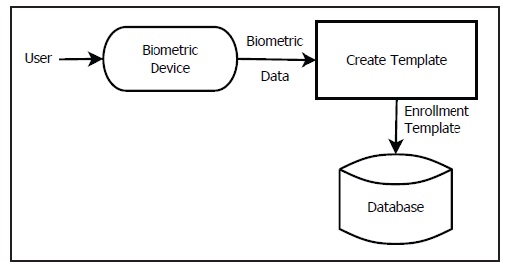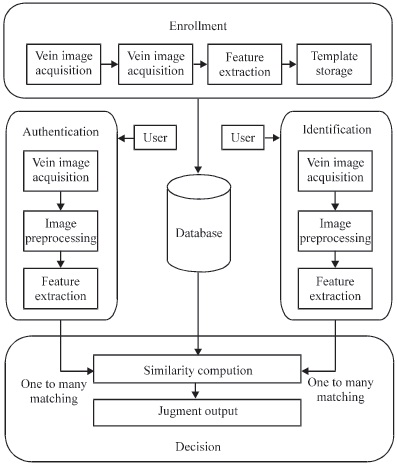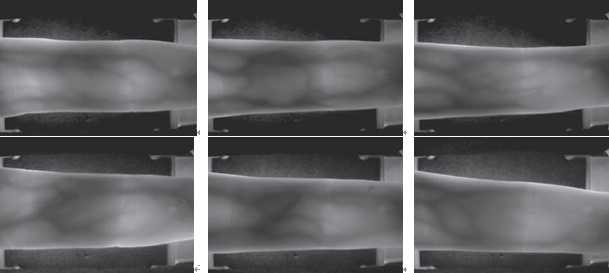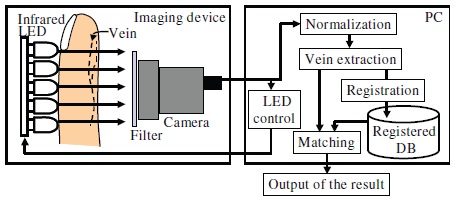Finger Vein Recognition | Seminar Report and PPT for CSE Students
Finger Vein Recognition | Seminar Report and PPT for CSE Students
In this Finger Vein Recognition paper, presented a robust method for finger vein recognition with gray level co- occurrence matrix based on the discrete wavelet transform. In first step for compression of the image we used wavelet Daubechies 4.
Also we used local binary pattern for feature extraction.The combination of local binary pattern and gray level co- occurrence matrix with discrete wavelet transform is not used before for finger vein recognition. The simulation results show that this method is robust and fast for feature extraction and classification.
INTRODUCTION:
Biometrics is identifying humans by their physiological, behavioral and biological characteristics. Biometrics can be divided into two categories: physiological biometrics and behavioral biometrics. Physiological biometrics are those which recognize individuals from physiological or biological attributes like face, iris, fingerprint, finger vein, hand geometry, etc. Behavioral biometrics on the other hand, are those which recognize individuals from human attitudes such as hand writing, signature or voice recognition. Fig. 1, illustrate enrollment to and authentication with the biometric system.

A general framework of vein recognition is shown in fig. 2. For the feature extraction step of the finger-vein recognition, which is the most important step, popular methods such as Line Tracking (LT), Maximum Curvature (MC) and Wide Line Detector (WL) are used in the literature. Among these, the LT method is very slow in the feature extraction phase. Moreover, LT, MC and WL methods are susceptible to rotation, translation and noise.

Finger – Vein Recognition
Disadvantages of fingerprint technology made scientists to think about using what is underneath the skin. Under the skin there are blood vessels which are unique to individuals (even in twins) and this uniqueness made a new biometric system based on finger veins. Biometrics based on veins, i.e., vascular biometrics are not limited to the fingers. Retina, face and hands can be identified using vascular properties too, however, the hardware devices used for finger vein identification are more preferred than the others because people are used to using their fingers for identification already. For capturing a vascular network, hemoglobin plays an important role by absorbing infrared light and after absorbing infrared light vein patterns are captured. Distance is very important in absorbing infrared light between skin and vessels: bigger distance leads to more noise in the captured image. Palms, back of the hands and fingers can be used as biometric data, however, people mostly prefer to use their fingers.
Devices for Finger-vein Image Acquisition
Finger-vein biometric systems use infrared (IR) light to capture blood vessels, however, the position of infrared light source affects the quality of the images. Moreover, the image acquisition device should be small and cheap, and it should provide high resolution images. In captured images, the veins appear as gray patterns. Finger is placed between the Infrared Light Emitting Diodes (IR-LEDs) and imaging device
Advantages and Disadvantages
1. Internal nature: Vein patterns are inside the skin and cannot be seen by naked eye, therefore, damaged skin will not reduce the chance of finding veins behind the skin. Furthermore, dry, wet or dirty hands would not affect the system.
2. Duplicate protection: Vein patterns are difficult to copy because blood needs to flow during image capturing. Scientists in Hitachi proved that it is impossible to cut the finger and register it to the system because blood will seep out.
3. Hygienic readers: In contrast to fingerprint and hand geometry systems, readers are believed to be free of germs because users do not touch the sensor.
4. Usability: These systems are very easy to use.
5. No cultural resistance.
6. Uniqueness: Finger veins are unique even between twins and do not change by aging.
Finger vein recognition is one of the forefront methods in biometric technology in recent years. Many successful methods such as Line Tracking (LT), Maximum Curvature (MC) and Wide Line Detector (WL) have been proposed for finger vein recognition. Among these methods, LT has a very slow matching and feature extraction phase. Moreover, LT, MC and WL are rotation dependent, and they are affected by image noise. To overcome these drawbacks, using some popular feature descriptors widely used for several Computer Vision or Pattern Recognition (CVPR) are proposed.
These descriptors include Fourier Descriptors (FD), Zernike Moments (ZM) [8], Histogram of Oriented Gradients (HOG) Local Binary Patterns (LBP) and Global Binary Patterns (GBP) . Among these, FD, ZM, HOG, LBP and GBP have not been applied to the finger vein recognition before. These descriptors are compared against LT, MC and WL. The novelty of the thesis is in (i) applying new feature extraction methods that have not been used for finger vein recognition before and (ii) evaluating the performance of all these methods under translation, rotation and noise. The focus is on the “feature extraction” step, and the preprocessing step is kept as simple as possible. As for matching, the matching method specific to LT, MC and WL which is called mismatch ratio is used and for all other descriptors, three different distance metrics called Euclidean distance, X2 (Chi- Square distance) and Earth Mover’s Distance (EMD) have been applied and compared to each other.
Database
The database in this study is carried out from SDUMLA-HMT finger-vein database that is publicly available [4]. This database contains 3; 816 images from both hands and provided images are index finger, middle finger and ring finger and for each finger six different images are captured. Fig. 4 displays small sample of the database.
The original images are of size 320*240, however, for the sake of faster analysis, the size is reduced to 160*120 using nearest neighbor interpolation. The images are gray scale images in the intensity range of [0-255]. Using Prewitt edge detector, strong edges are extracted, the boundaries of the finger are found and the mask image is produced. Masking the image is a very important step since it eliminates the irrelevant areas.

It contains finger vein images acquired from different persons and with different skin colors according to the evaluation of average image gray value, image contrast and entropy on the images from the available databases, the acquired images in MMCBNU_6000 have comparable image quality. The second vein finger data base called HKPU-FV [13] which was created by Ajay and Zhou. UTFV FV database was from University of Twente, Recently, 2 finger vein databases were produced, that were from Chonbuk Nation University [14] and Tsinghua University [15]. SDUMLAHMT[ 16] is an open finger vein database where every subject who involved was asked to produce images of his/her index finger, middle finger and ring finger of both hands, and the collection for each of the 6 fingers is repeated for 6 times to obtain 6 finger vein images. The largest scale of finger vein database as reported is PKU Finger Vein Database [14] from Peking University which was established based on the checking attendance system.
CONCLUSION:
This paper present a survey of human identification with finger vein recognition. In this paper some method anddatabase is investigated. There are different feature description methods in the literature that can be analyzed. For example, there are extensions of LBP, HOG and GBP that provide several invariances, such as rotation invariance, scale invariance. These extensions are worth analyzing as future work. For analyzing resilience to rotation and translation, rotating the finger in different directions and axes will be much realistic, moreover, changing the distance between the finger and camera can be tested instead of artificially rotating, translating and adding noise to the images.
BIBLIOGRAPHY:
[1] N. Miura, A. Nagasaka, T. Miyatake,”Feature extraction of finger-vein patterns based on repeated line tracking and its application to personal identification,” Machine Vision and Applications, Vol. 15, pp. 194-203, 2004.
[2] H. Vallabh,”Authentication using finger-vein recognition,” University of Johannesburg, 2012.
